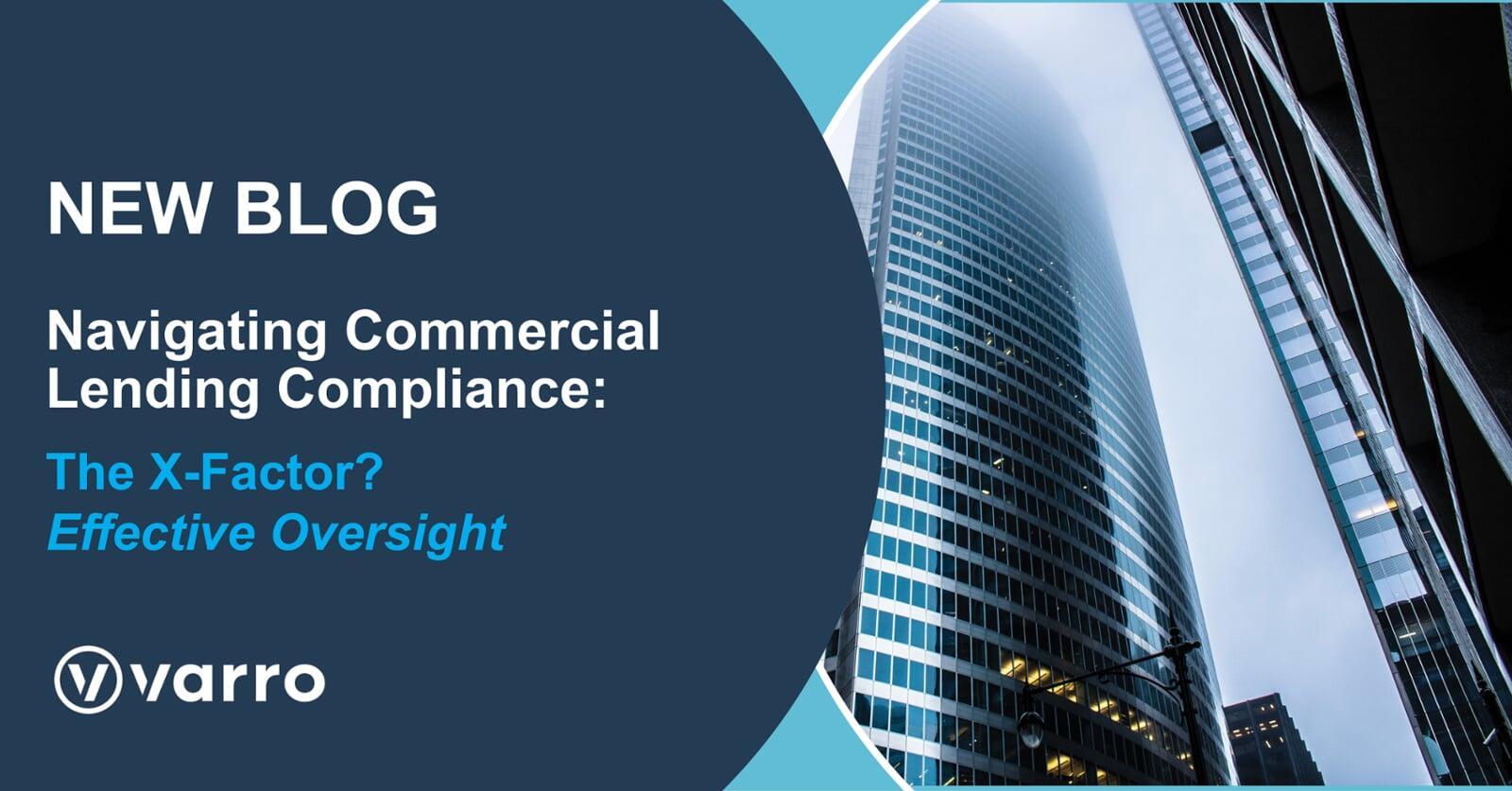Navigating Commercial Lending Compliance:
The X-Factor? Effective Oversight
When it comes to commercial lending, compliance and oversight are not just regulatory requirements—they are essential components of risk management, financial stability, and institutional integrity. As regulatory frameworks have become increasingly more stringent, lenders and servicers must prioritize compliance strategies to mitigate risks and maintain trust with stakeholders.
Why Compliance Matters in Commercial Lending
Commercial loan compliance encompasses devotion to federal, state, and local regulations that govern lending practices. As laws frequently do, these regulations change, but ultimately are designed to ensure fair lending practices, prevent fraud, and maintain the financial system's stability. Non-compliance can…well, non-compliance can introduce risk in a myriad of ways.
Key regulations that impact commercial lending include:
- Truth in Lending Act (TILA): Ensures transparency in loan terms and disclosures.
- Equal Credit Opportunity Act (ECOA): Prohibits discrimination in lending.
- Bank Secrecy Act (BSA) & Anti-Money Laundering (AML) Regulations: Requires financial institutions to monitor and report suspicious activities.
- Dodd-Frank Wall Street Reform and Consumer Protection Act: Introduced regulations to prevent another financial crisis and increase consumer protections.
A proactive approach to compliance helps lenders avoid costly fines, legal battles, and operational disruptions.
The Role of Oversight in Ensuring Compliance
Technology is playing an increasingly vital role in ensuring that oversight and compliance are conducted effectively. Advanced compliance management software for inspections, risk-management, and financial impact automates monitoring, reporting, and documentation, significantly reducing the risk of human error. By leveraging technology, lenders can not only enhance their compliance strategies but also improve efficiency, accuracy, and overall risk management.
Key elements of effective oversight in commercial loan compliance include:
- Internal Audits and Reviews: Regular internal audits assess whether lending practices comply with regulatory requirements and internal policies.
- Risk Management Strategies: Identifying, assessing, and mitigating risks associated with lending practices help prevent financial and legal repercussions.
- Technology and Automation: Implementing compliance management software streamlines monitoring, reporting, and documentation processes, reducing the risk of human error.
- Training and Education: Ongoing training for employees ensures they remain informed about the latest regulatory changes and compliance best practices.
About Varro:
Varro is a property technology company specializing in the end-to-end management of commercial real estate assets. Their suite of products and services automates and streamlines various aspects of asset management, focusing on enhancing operational efficiency and transparency.


